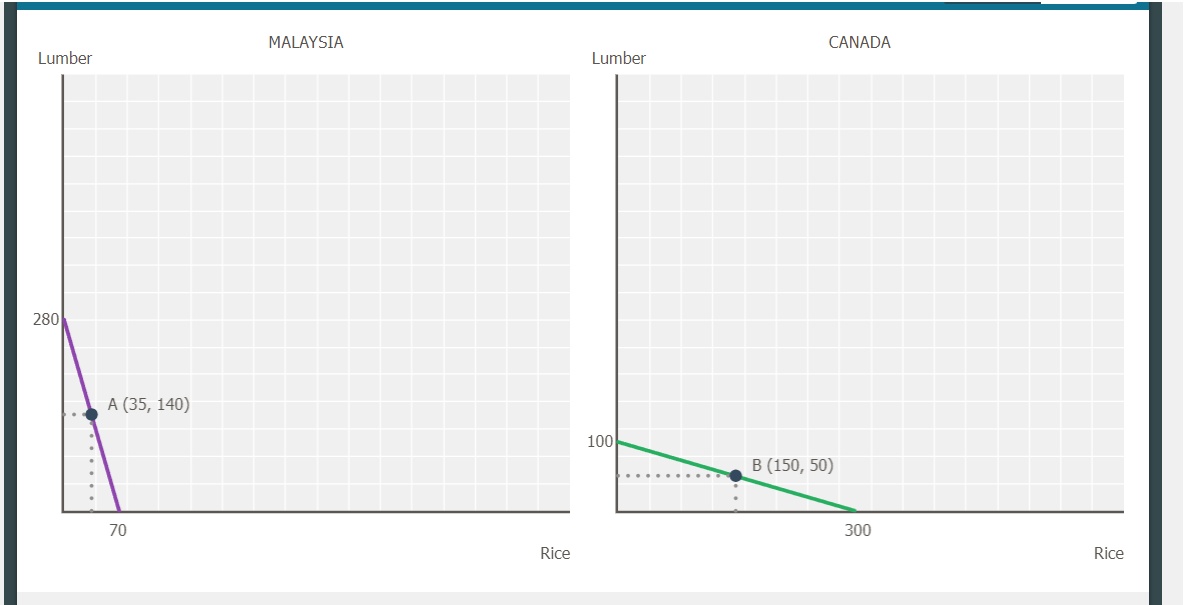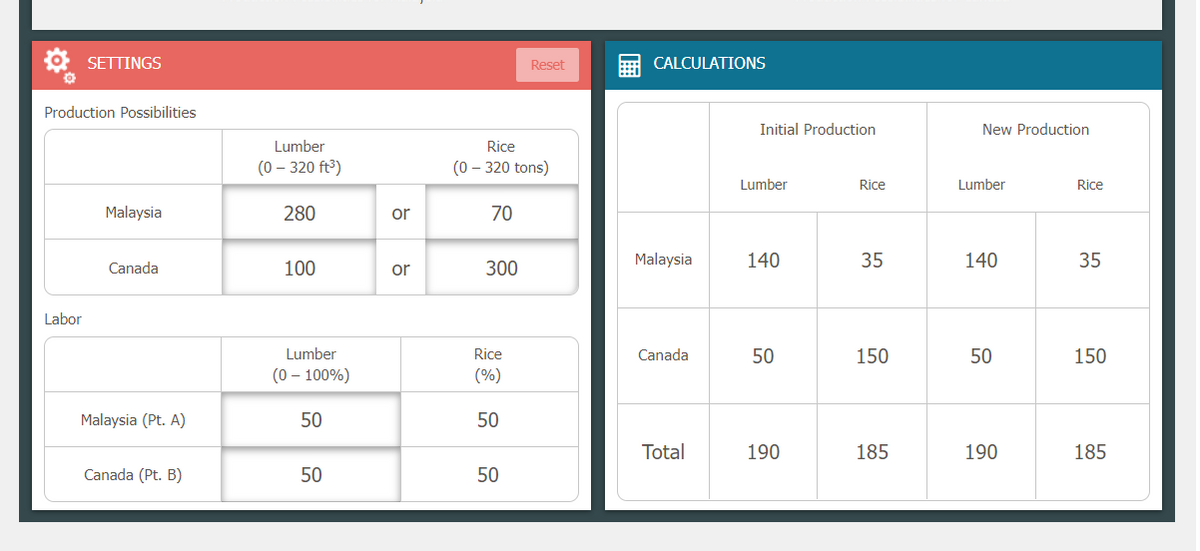Suppose Malaysia's production possibilities include a maximum of 80 units of rice or 120 units of lumber, and Canada's production possibilities include a maximum of 80 units of rice or 40 units of lumber. Then suppose each country initially allocates 50% of its labor to producing each product. a) Total production by the two countries equals 80 tons of rice and 80 ft3 of lumber. b) Now suppose that Malaysia increases the labor it allocates to lumber by 10%. Its lumber production rises by 12 and its rice production falls by 8 . c) If Canada reallocates its labor to increase its rice production by exactly the amount that Malaysia's rice production fell, by how much must its lumber production fall? ??? ft3 d) State the combined effects on total production of the reallocations in part b and c. Total production of rice changes by 0 tons. (include a negative sign, if needed) Total production of lumber changes by ??? ft3. (include a negative sign, if needed)
I need the answer for part C and the second part of D.
Instructions: Manipulate numbers in the Settings window as needed to answer the following questions. You may find it helpful to click "combined" above the graph window to view each country's production on a single graph.
Suppose Malaysia's production possibilities include a maximum of 80 units of rice or 120 units of lumber, and Canada's production possibilities include a maximum of 80 units of rice or 40 units of lumber. Then suppose each country initially allocates 50% of its labor to producing each product.
a) Total production by the two countries equals 80 tons of rice and 80 ft3 of lumber.
b) Now suppose that Malaysia increases the labor it allocates to lumber by 10%. Its lumber production rises by 12 and its rice production falls by 8 .
c) If Canada reallocates its labor to increase its rice production by exactly the amount that Malaysia's rice production fell, by how much must its lumber production fall? ??? ft3
d) State the combined effects on total production of the reallocations in part b and c.
Total production of rice changes by 0 tons. (include a negative sign, if needed)
Total production of lumber changes by ??? ft3. (include a negative sign, if needed)


Trending now
This is a popular solution!
Step by step
Solved in 3 steps







